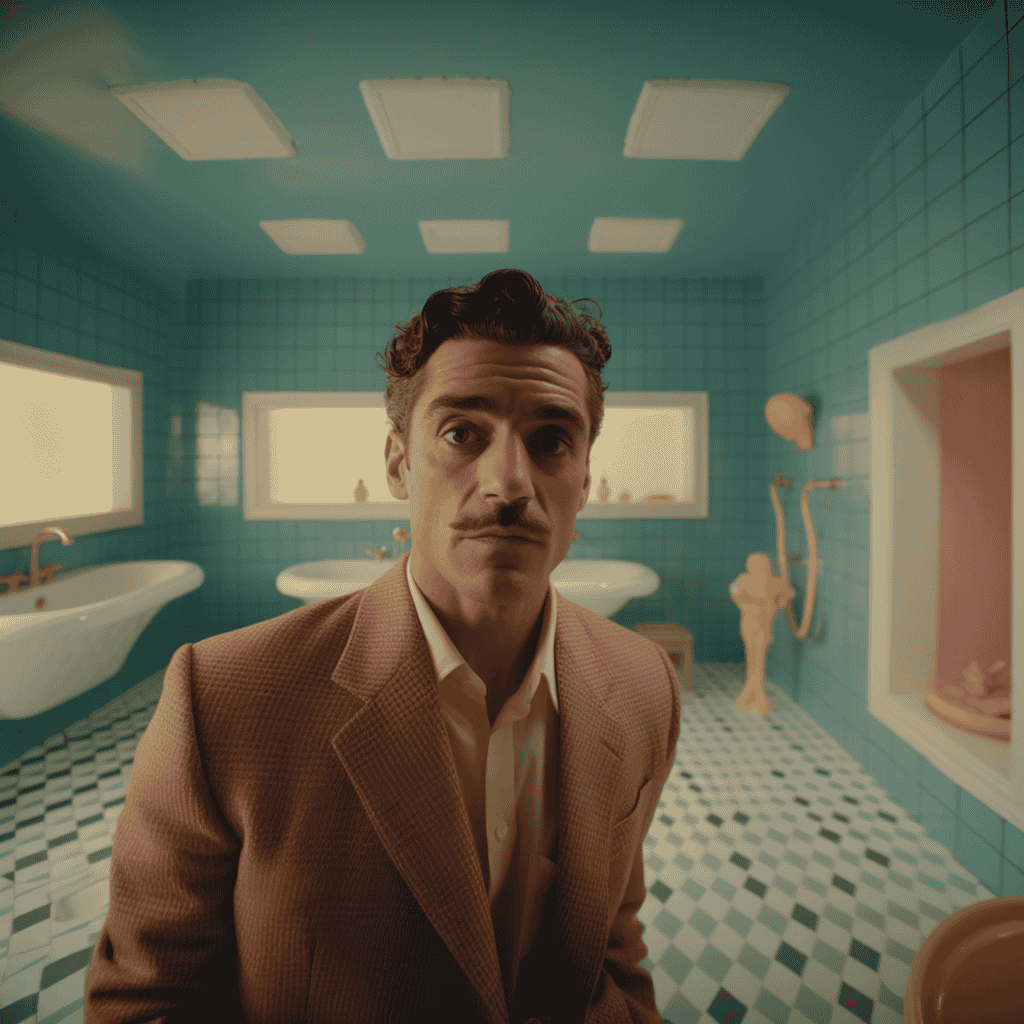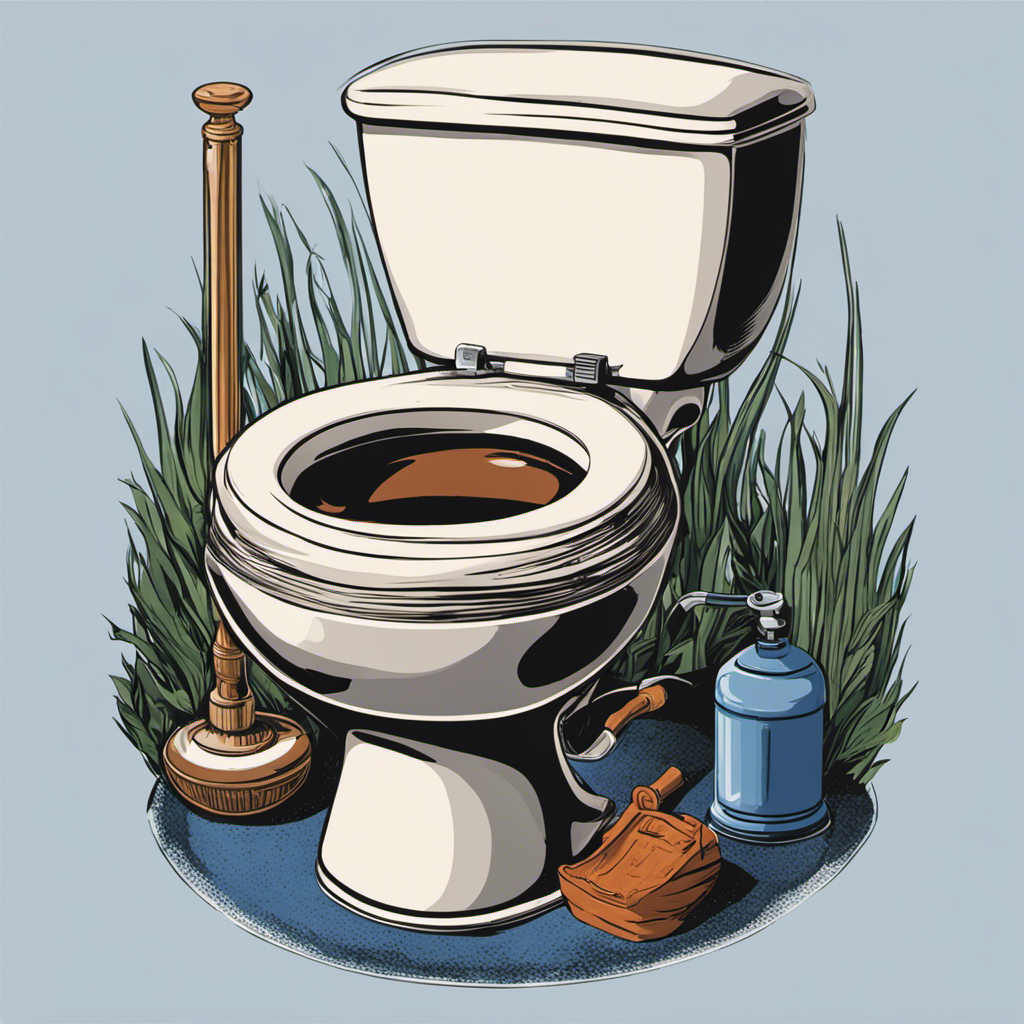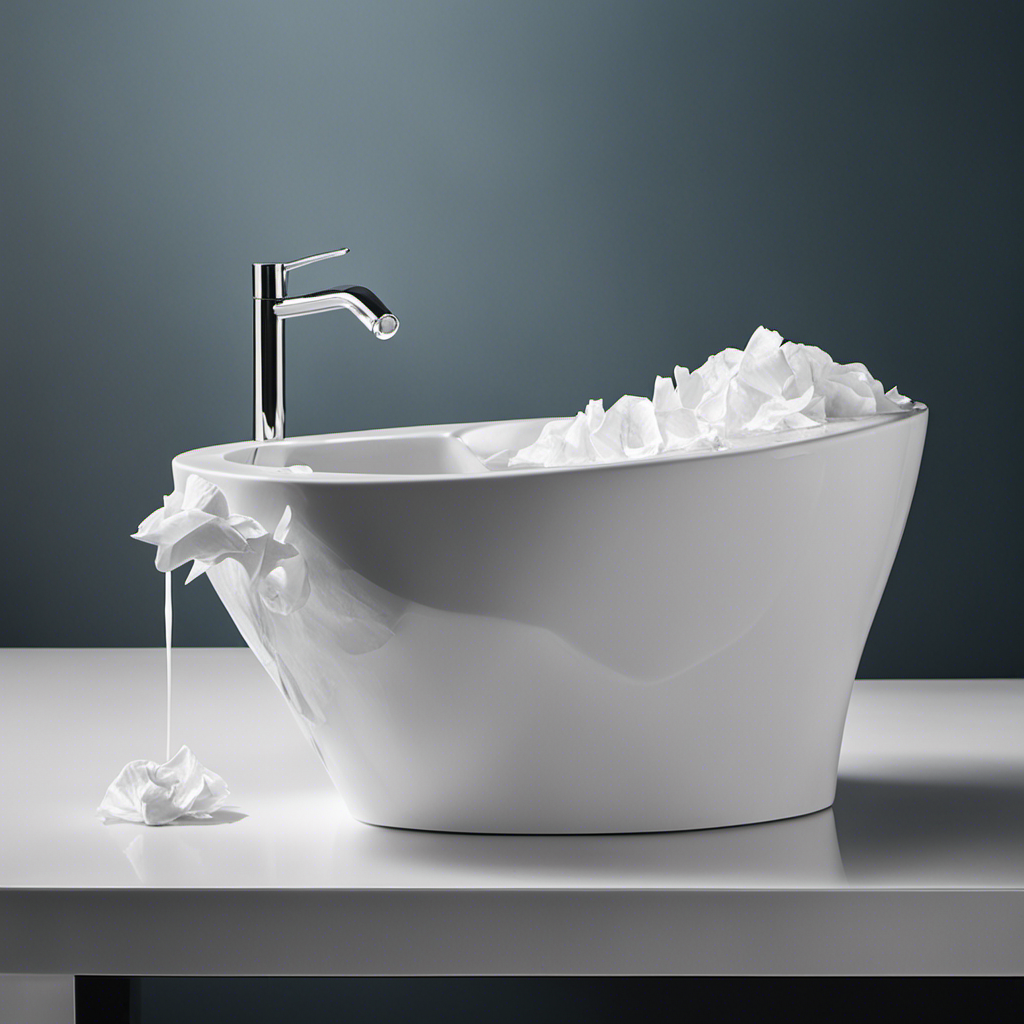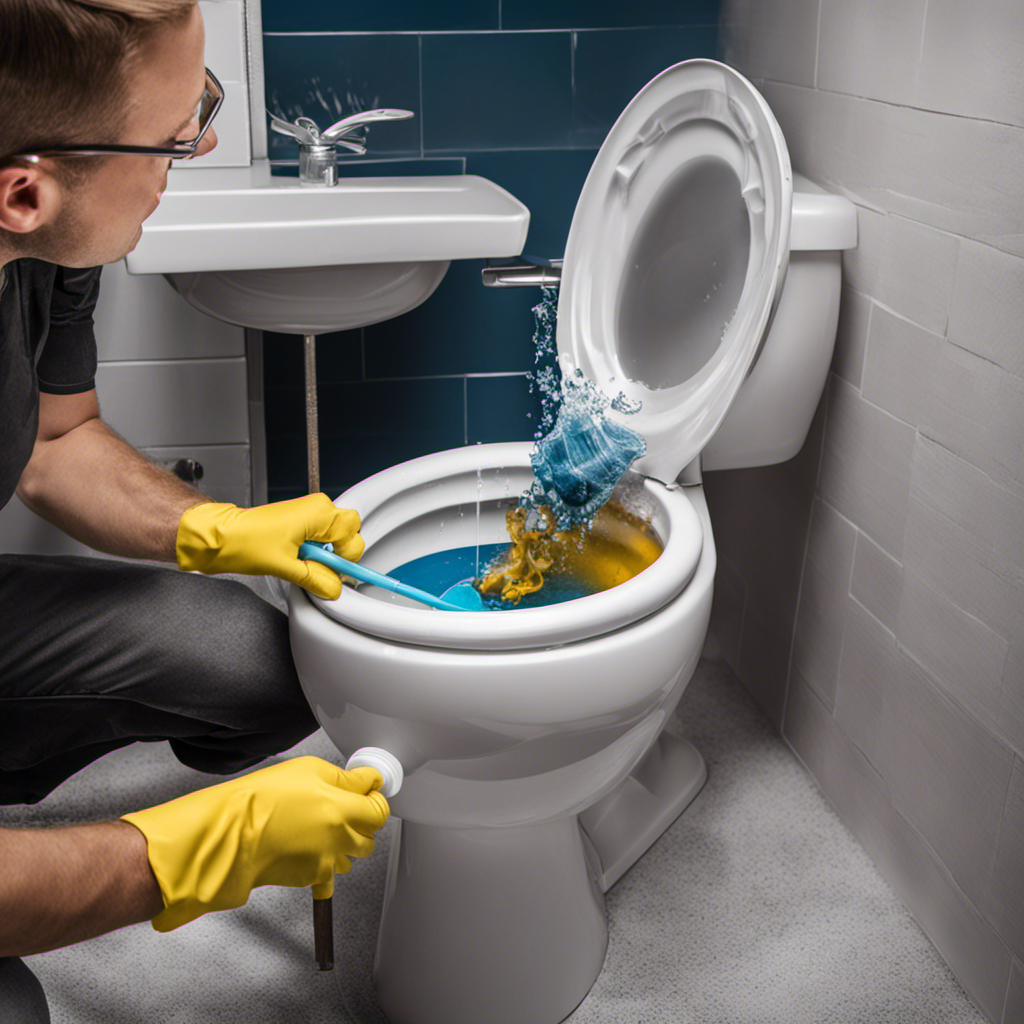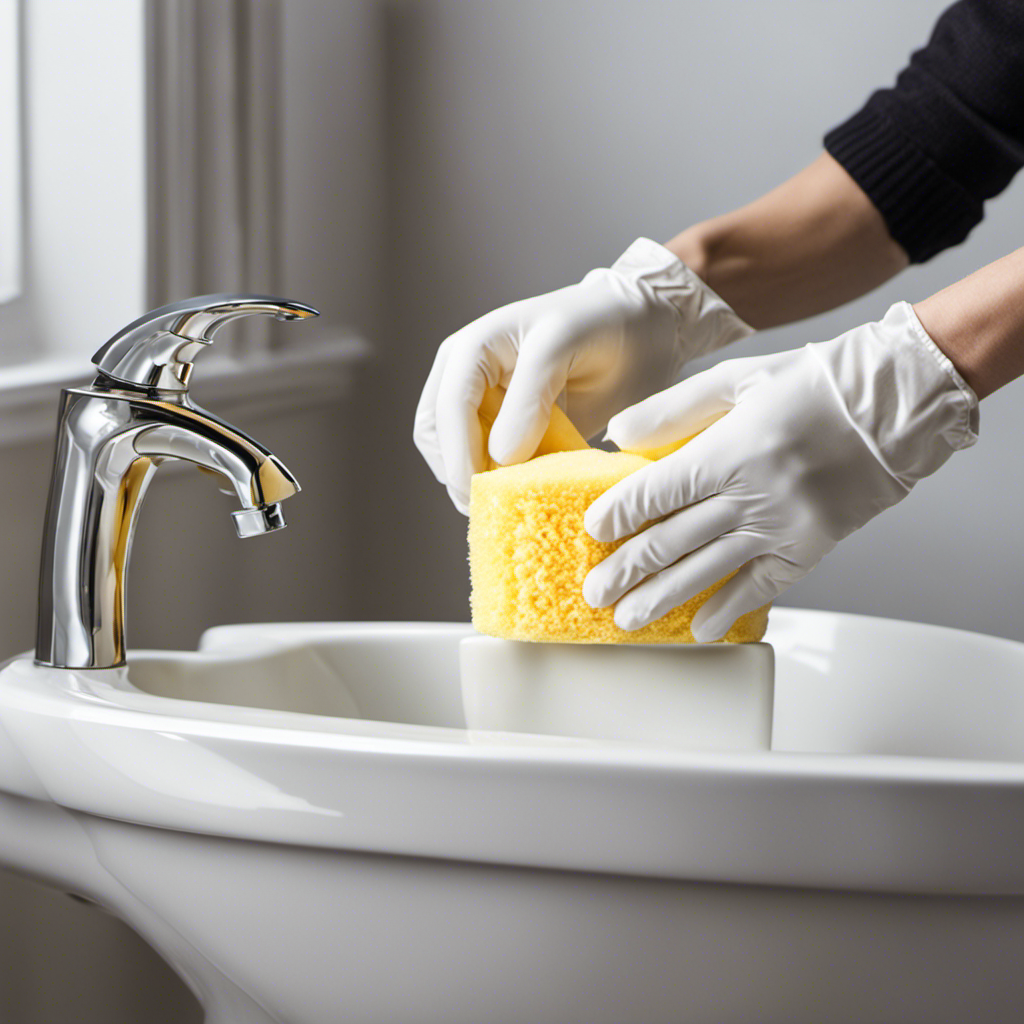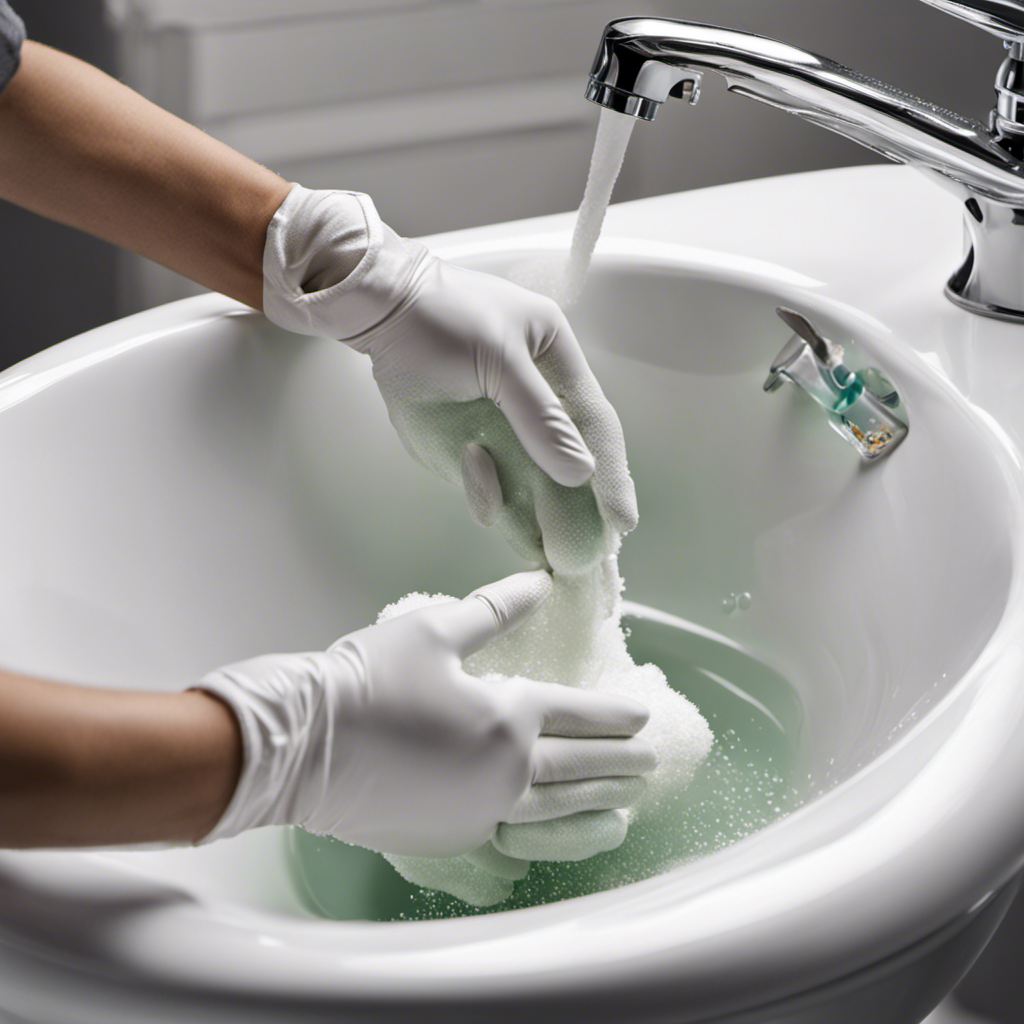FAQ - Advanced Bathroom Queries
How to Use a Bidet Toilet Seat
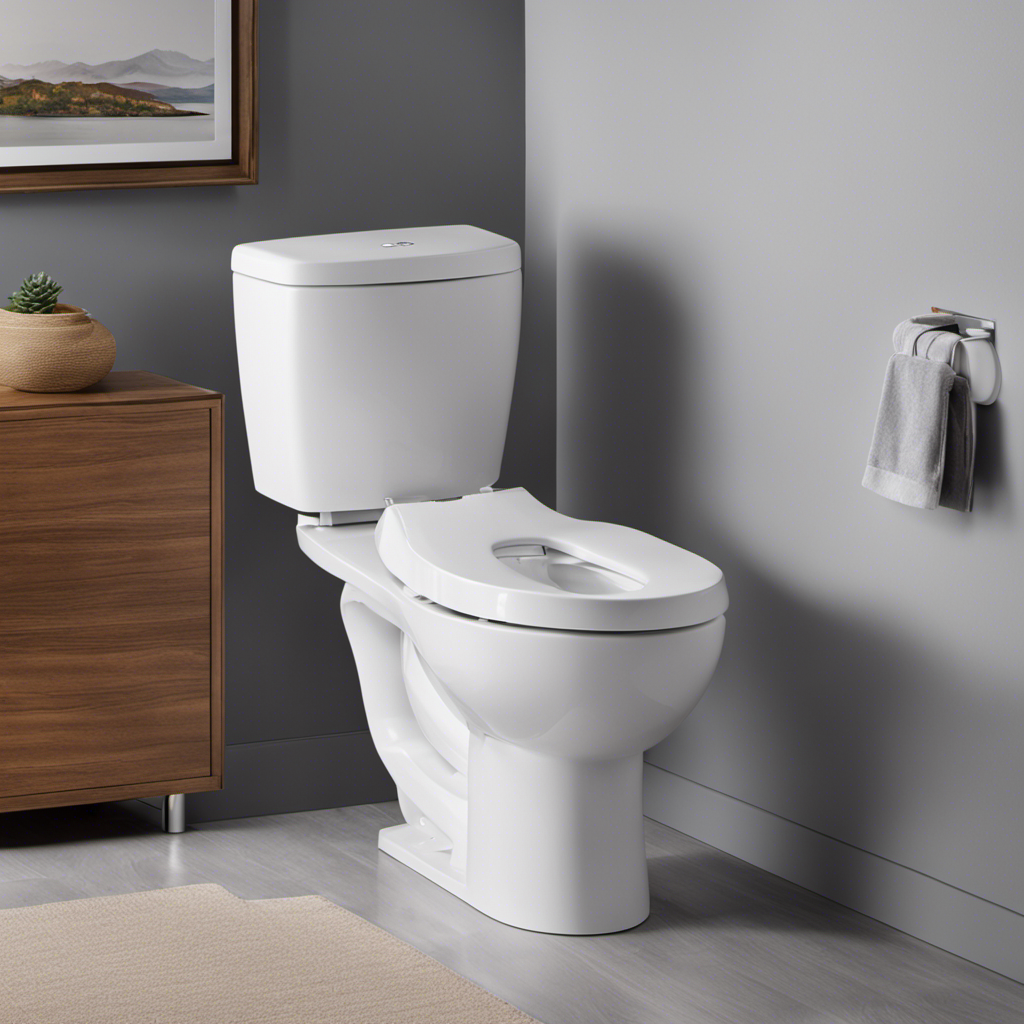
Hey there, folks! Ever wondered about the wonders of a bidet toilet seat? Well, look no further because I’m here to guide you through it all.
In this handy-dandy article, I’ll walk you through the benefits, functions, and step-by-step process of using a bidet toilet seat. We’ll even dive into adjusting water temperature and pressure, as well as maintaining and cleaning these nifty contraptions.
So, let’s get started and find the perfect bidet toilet seat for your needs!
Key Takeaways
- Improved hygiene and reduced toilet paper usage
- More thorough and effective cleansing experience
- Beneficial for individuals with certain medical conditions
- Contributes to a greener and more sustainable future
Benefits of Using a Bidet Toilet Seat
Using a bidet toilet seat can offer numerous benefits. Improved hygiene and reduced toilet paper usage are among the advantages. Bidets provide a more thorough and effective cleansing experience compared to using toilet paper alone. The gentle water stream helps to remove bacteria and germs, reducing the risk of infections and irritation. Bidets are also beneficial for individuals with certain medical conditions, such as hemorrhoids or urinary tract infections, as they provide gentle and soothing relief.
In terms of environmental impact, bidets help to reduce the excessive use of toilet paper. This reduction leads to less deforestation and water pollution caused by the manufacturing process. By incorporating a bidet into your bathroom routine, you not only improve your personal hygiene but also contribute to a greener and more sustainable future.
Understanding the Functions of a Bidet Toilet Seat
To fully grasp the various functions of a bidet toilet seat, you should familiarize yourself with its different features. Understanding bidet functionality is crucial in order to make the most of this modern bathroom fixture.
One important aspect to consider is the different bidet spray patterns. Most bidet toilet seats offer multiple spray options, such as rear wash, feminine wash, and oscillating wash. The rear wash provides a thorough cleansing for both men and women, while the feminine wash is specifically designed for women’s hygiene needs. The oscillating wash features a back-and-forth motion to ensure thorough cleaning.
Some bidet toilet seats even offer adjustable water pressure and temperature settings, allowing you to customize your experience. By understanding the various functions and spray patterns, you can effectively utilize a bidet toilet seat for optimal cleanliness and comfort.
Step-by-Step Guide to Using a Bidet Toilet Seat
When using a bidet toilet seat, proper positioning is essential for both comfort and cleanliness. By sitting in the correct position, you can ensure that the water spray reaches the desired areas and effectively cleanses them.
Additionally, adjusting the water pressure settings allows for a personalized and gentle cleaning experience.
The benefits of using a bidet toilet seat are numerous, including improved hygiene, reduced toilet paper usage, and a soothing sensation after each use.
Proper Positioning for Comfort and Cleanliness
For maximum comfort and cleanliness, it’s important to position yourself properly on the bidet toilet seat. Here are some proper positioning techniques that will ensure hygiene benefits:
- Sit squarely on the seat, making sure your buttocks are positioned towards the back.
- Keep your feet flat on the floor to maintain stability and balance.
- Place your feet shoulder-width apart for added support.
- If available, use the footrest on the bidet seat for better positioning.
- Lean slightly forward, allowing the water to reach the desired areas effectively.
- Relax your muscles and let the water cleanse gently.
- Adjust the water pressure and temperature to your preference.
By following these proper positioning techniques, you will enjoy maximum comfort and cleanliness during your bidet toilet seat experience.
Adjusting Water Pressure Settings
Adjusting the water pressure settings on the bidet seat will allow you to customize your cleansing experience.
To control the water pressure, locate the control panel on the side of the bidet seat. Depending on the model, you may find buttons or a dial to adjust the pressure.
Press the ‘+’ or ‘-‘ buttons to increase or decrease the water pressure respectively. Some bidet seats also offer multiple pressure levels to choose from. Experiment with different settings to find what suits your preferences.
Additionally, some bidet seats allow you to adjust the spray angle. This feature is useful for targeting specific areas and achieving thorough cleansing. Look for a lever or button that allows you to adjust the spray angle and find the most comfortable position for you.
Benefits of Using Bidet
One of the benefits of incorporating a bidet into your bathroom routine is that it can provide a more hygienic and thorough cleansing experience. Here are some of the health advantages of using a bidet:
-
Improved hygiene:
-
Bidets use water to clean, eliminating the need for toilet paper and reducing the risk of bacterial contamination.
-
The gentle stream of water helps to remove bacteria and germs more effectively than wiping with toilet paper.
-
Reduced irritation:
-
Bidets are especially beneficial for individuals with sensitive skin or certain medical conditions, as they can help alleviate irritation and discomfort caused by traditional toilet paper.
By using a bidet, you can improve your personal hygiene and reduce the risk of infections. The thorough cleansing provided by a bidet ensures a cleaner and healthier bathroom experience.
Now, let’s move on to the next section where we will learn about adjusting water temperature and pressure on a bidet toilet seat.
Adjusting Water Temperature and Pressure on a Bidet Toilet Seat
To adjust the water temperature and pressure on your bidet toilet seat, start by locating the control panel. Typically, the control panel is located on the side of the seat within easy reach.
Once you’ve found the control panel, you’ll notice buttons or dials that allow you to change the temperature settings and adjust the water pressure. To change the temperature, simply press the temperature button and use the arrows to increase or decrease the temperature to your desired level.
Troubleshooting common issues with the water temperature and pressure can be done by checking the water supply and ensuring it is properly connected. Additionally, you can consult the user manual or contact customer support for further assistance.
Remember to always follow the manufacturer’s instructions for adjusting the settings to ensure a comfortable and effective bidet experience.
Maintaining and Cleaning a Bidet Toilet Seat
When cleaning and maintaining your bidet, it’s important to regularly wipe down the control panel and seat with a mild, non-abrasive cleaner. This will help keep your bidet toilet seat clean and free from dirt and bacteria.
Here are some additional tips for maintaining and cleaning your bidet toilet seat:
-
Cleaning the Nozzle
Use a soft cloth or sponge to clean the nozzle of your bidet. Avoid using abrasive materials as they can damage the nozzle. If there is any residue or buildup on the nozzle, you can use a mixture of water and vinegar to gently clean it. -
Preventing Mineral Deposits
To prevent mineral deposits from forming on your bidet toilet seat, it’s important to regularly clean the water inlet filter. This can be done by removing the filter and rinsing it under running water. You can also use a descaling solution specifically designed for bidets to remove any stubborn mineral deposits.
Tips for Choosing the Right Bidet Toilet Seat for Your Needs
When it comes to choosing the right bidet toilet seat, there are a few key points to consider.
First and foremost, seat size and fit are crucial for comfort and functionality. You’ll want to ensure that the seat is the right size for your toilet bowl and that it provides a comfortable and secure fit.
Additionally, water pressure options are important to consider, as different individuals may have different preferences for water pressure during cleansing.
Lastly, exploring the additional features available can help you find a bidet toilet seat that meets all of your needs. Whether it’s a heated seat, adjustable water temperature, or a remote control for easy operation.
Seat Size and Fit
Make sure the bidet toilet seat fits properly by measuring the dimensions of your toilet seat. This is an important step in finding the right size bidet toilet seat for your bathroom.
To ensure a proper fit, follow these steps:
- Measure the length and width of your toilet seat using a tape measure.
- Check the size of the bidet toilet seat you are interested in purchasing to see if it matches the dimensions of your toilet seat.
- If the dimensions match, the bidet toilet seat should fit properly.
- If the dimensions do not match, you may need to look for a different size or model.
By taking the time to measure your toilet seat and find the right size bidet toilet seat, you can ensure a proper fit and enhance your bathroom experience.
Once you have found the right size, you can move on to exploring the different water pressure options available for bidet toilet seats.
Water Pressure Options
Finding the right size bidet toilet seat is important, but once you have done that, you can explore the different water pressure options available. Pressure control allows you to adjust the intensity of the water spray according to your preference. Some bidet toilet seats offer multiple pressure settings, ranging from gentle to strong, giving you the flexibility to choose the most comfortable option.
This feature is particularly useful for individuals with sensitive skin or those who prefer a more invigorating cleanse. Additionally, it is important to consider the water temperature options available. Some bidet toilet seats offer adjustable water temperature settings, allowing you to customize your experience.
Whether you prefer a warm or cool water spray, having the option to control the water temperature ensures a more enjoyable and refreshing bidet experience.
Additional Features Available
To enhance your bidet experience, you can explore the additional features available, such as heated seats, air dryers, and built-in deodorizers. These advanced functionalities provide added comfort and convenience during and after each use.
Here are some additional features to consider:
-
Heated Seats:
-
Adjustable temperature settings for personalized comfort
-
Instant warmth for a cozy experience even on cold days
-
Air Dryers:
-
Powerful airflow to gently dry after cleaning
-
Adjustable speed and temperature for optimal drying
-
Built-in Deodorizers:
-
Eliminates unpleasant odors for a fresh bathroom environment
-
Activated carbon filters to effectively remove odors
These additional features not only enhance your bidet experience but also promote hygiene and ensure a pleasant and comfortable bathroom experience. Choose a bidet toilet seat with the advanced functionalities that suit your preferences and enjoy the ultimate in personal care and cleanliness.
Conclusion
In conclusion, using a bidet toilet seat is a game-changer for personal hygiene. It offers numerous benefits, such as improved cleanliness, reduced toilet paper usage, and soothing relief for certain health conditions.
By understanding its functions and following a step-by-step guide, you can easily incorporate this amazing device into your daily routine. Remember to adjust the water temperature and pressure according to your preferences, and regularly clean and maintain the bidet toilet seat for optimal performance.
So, why settle for ordinary when you can experience the refreshing embrace of a bidet toilet seat? It’s time to upgrade your bathroom experience.
Mateo’s flair for writing is matched only by his keen eye for design. As an interior designer turned writer, Mateo brings a unique perspective. He blends aesthetics with functionality in every piece he pens, providing readers with beautifully crafted content that’s also supremely useful.
Mateo loves exploring the latest bathroom tech trends and is our expert on smart toilets. When he’s not writing or designing, Mateo can be found sketching ideas for his next big project at local coffee shops.
FAQ - Advanced Bathroom Queries
Can You Flush the Toilet Paper in Italy

Have you ever wondered if it’s okay to flush toilet paper in Italy? Here’s the lowdown: plumbing practices in Italy may vary from what you’re used to.
We’ve all experienced those moments of uncertainty in unfamiliar bathrooms, right? But fear not, because we’re here to shed some light on this cultural quirk.
In this article, we’ll explore the ins and outs of toilet paper disposal in Italy and offer some handy tips for navigating public restrooms like a pro.
So, let’s dive in!
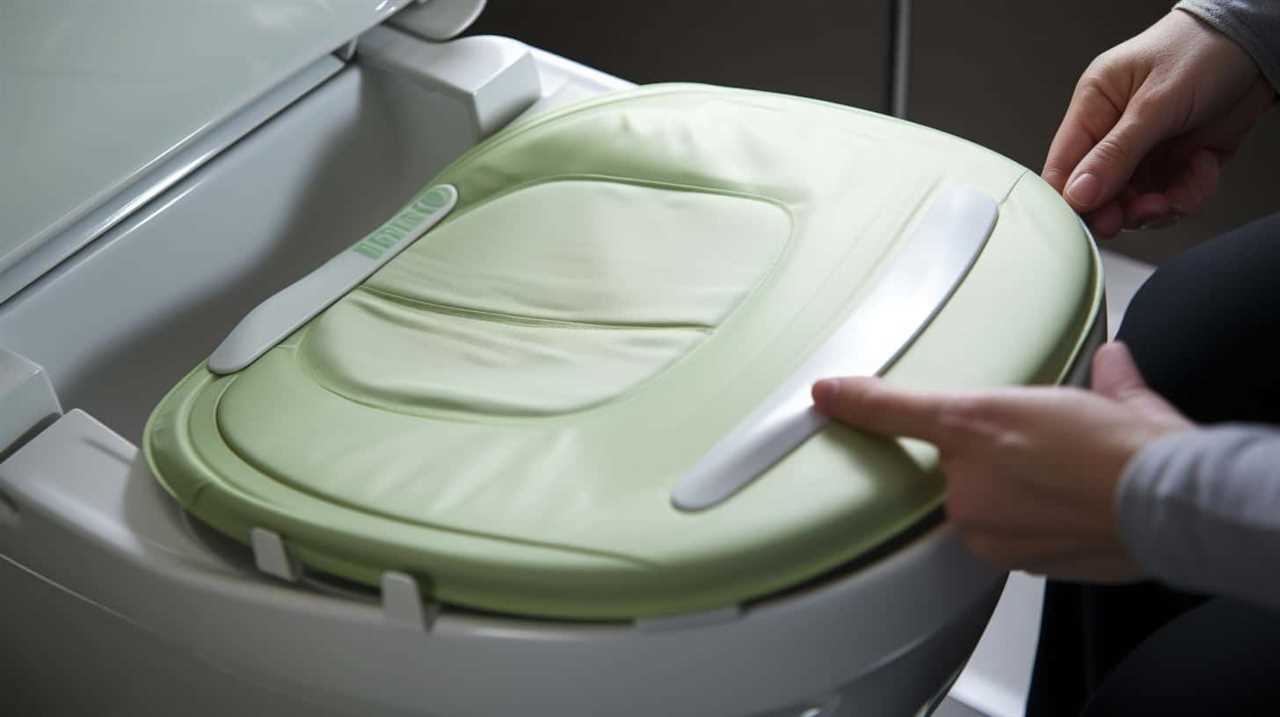
Key Takeaways
- Italian plumbing systems are designed to handle the disposal of toilet paper without any issues.
- In many parts of Italy, the plumbing systems aren’t designed to handle toilet paper, so it is not flushed.
- Italians often dispose of used toilet paper in a waste bin next to the toilet instead of flushing it.
- Proper toilet paper disposal in Italy contributes to the preservation of the country’s historic buildings and protects the delicate plumbing infrastructure.
Plumbing System in Italy
In Italy, the plumbing system allows us to flush toilet paper down the toilet. This convenience isn’t only practical but also has important maintenance and environmental implications.
When it comes to maintenance, Italian plumbing systems are designed to handle the disposal of toilet paper without any issues. The pipes and sewer systems are built to efficiently transport and process waste, including toilet paper, preventing clogs and blockages. This is a testament to the advanced engineering and infrastructure in the country.
From an environmental perspective, allowing the flushing of toilet paper reduces the need for alternative disposal methods such as trash bins or separate waste systems. It also minimizes the risk of contamination and the spread of bacteria.
However, cultural differences in toilet paper disposal exist, which we’ll explore in the next section.

ARTICLE TRANSITION:
Now that we’ve discussed the plumbing system in Italy, let’s delve into the cultural differences in toilet paper disposal.
Cultural Differences in Toilet Paper Disposal
Let’s explore the cultural differences that exist when it comes to disposing of toilet paper in Italy. Toilet paper etiquette in Italy is quite different from what most of us are accustomed to.
- Do Not Flush: In many parts of Italy, the plumbing systems aren’t designed to handle toilet paper. Instead of flushing it down the toilet, Italians often dispose of used toilet paper in a waste bin next to the toilet.
- Bin Placement: It’s important to note that these waste bins are usually lined with plastic bags, which are replaced regularly to maintain cleanliness.
- Odor Control: To minimize any unpleasant smells, it’s common for Italians to use scented garbage bags and air fresheners in the bathroom.
Understanding these cultural differences in toilet paper disposal is crucial to avoid any plumbing mishaps during your visit to Italy.
Now, let’s explore some alternative methods of toilet paper disposal.

Alternative Methods of Toilet Paper Disposal
We can explore some alternative methods of toilet paper disposal in Italy. While flushing toilet paper is not the norm, there are sustainable options available. One popular method is using a bidet, which is a separate water basin used for cleaning oneself after using the toilet. Bidets are commonly found in Italian bathrooms and offer a hygienic and eco-friendly alternative to toilet paper. Another option is to use toilet paper specifically designed for disposal in waste bins, rather than flushing it. These specially-made toilet paper products are biodegradable and can be safely discarded in the bins provided. By utilizing these alternative methods, Italians are able to reduce their environmental impact while maintaining cleanliness. Speaking of cleanliness, let’s now move on to some tips for using public restrooms in Italy.
| Sustainable Options | Bidet Usage |
|---|---|
| Hygienic | Water-based |
| Eco-friendly | Reduces waste |
| Common in Italy | Alternative to toilet paper |
| Biodegradable | Clean and refreshing |
| Reduces environmental impact | Promotes personal hygiene |
Now that we’ve explored alternative methods of toilet paper disposal, let’s dive into some tips for using public restrooms in Italy.
Tips for Using Public Restrooms in Italy
Moving on to using public restrooms in Italy, there are a few tips that can help ensure a pleasant experience.
- Practice good hand hygiene: Always carry hand sanitizer or antibacterial wipes, as not all restrooms may have soap or paper towels available.
- Follow proper toilet etiquette: Italians are serious about keeping restrooms clean. It’s important to remember to not throw toilet paper into the toilet bowl, but instead, dispose of it in the waste bin provided.
- Be prepared for paid restrooms: Many public restrooms in Italy require a small fee for usage. It’s helpful to always carry some loose change to avoid any awkward situations.
Conclusion: Proper Toilet Paper Disposal in Italy
Continuing the conversation from the previous subtopic, we can delve into the proper disposal of toilet paper in Italy. When it comes to cultural implications, it is important to note that Italy has a different approach to toilet paper disposal compared to other countries. In most regions, it is customary to throw used toilet paper into a bin next to the toilet instead of flushing it down the toilet. This practice is rooted in the country’s older plumbing systems, which are not designed to handle large amounts of toilet paper.

This method of disposal may seem unusual to visitors, but it is essential to respect and abide by local customs. It is also worth considering the environmental impact of flushing toilet paper. By disposing of it in a bin, Italy reduces the strain on its sewage system and prevents potential blockages and costly repairs. Additionally, this practice contributes to the preservation of the country’s historic buildings, as it helps protect the delicate plumbing infrastructure.
To help you understand the proper toilet paper disposal in Italy, here is a simple table outlining the key differences compared to other countries:
| Country | Toilet Paper Disposal Method |
|---|---|
| Italy | Throw in a bin |
| United States | Flush down the toilet |
| United Kingdom | Flush down the toilet |
Frequently Asked Questions
Is the Plumbing System in Italy Similar to the Plumbing System in Other Countries?
Cultural differences affect plumbing systems worldwide. When comparing the plumbing system in Italy to others, it’s essential to consider factors like toilet paper disposal. Understanding these variations helps us navigate plumbing practices while traveling.
What Are Some Cultural Differences in Toilet Paper Disposal in Italy Compared to Other Countries?
Cultural practices vary when it comes to toilet paper disposal in Italy compared to other countries. It’s important to note that some places don’t allow flushing due to the plumbing system and environmental impact.
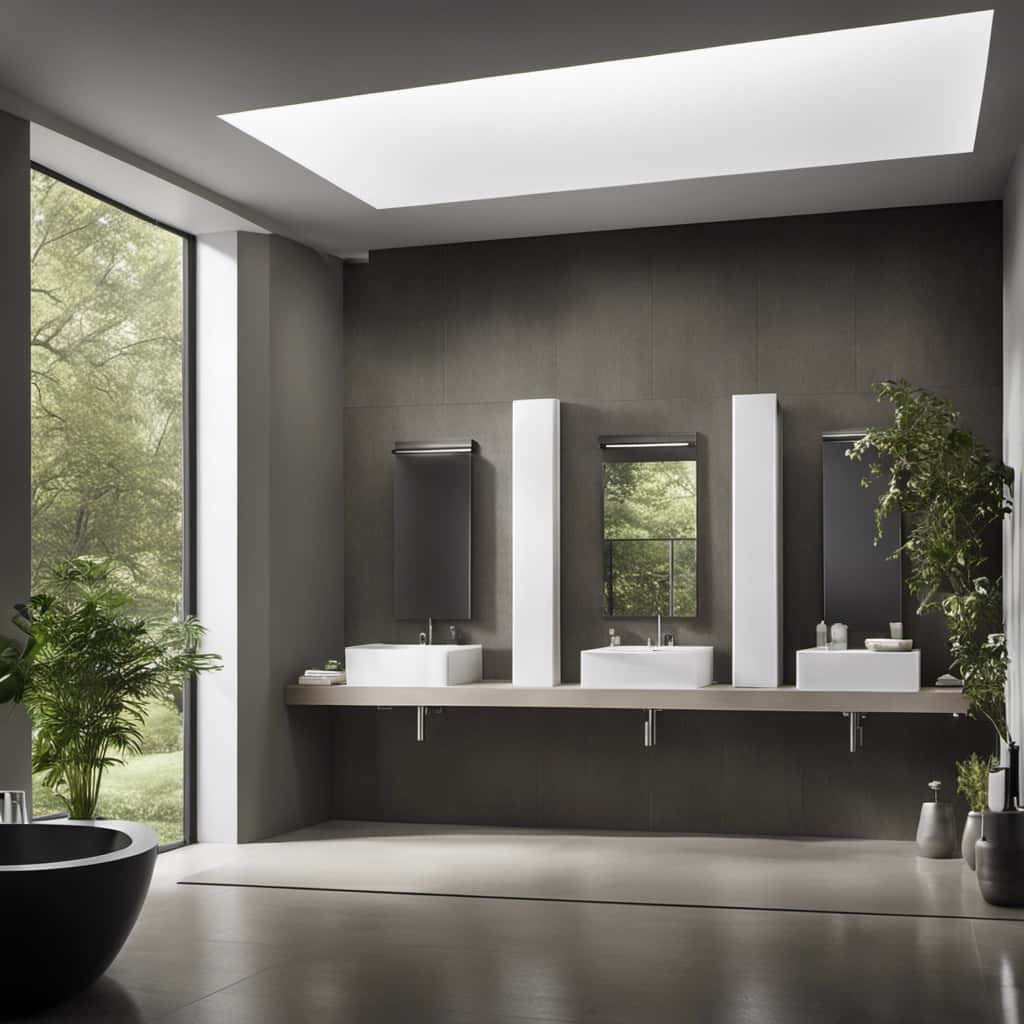
Are There Any Alternative Methods of Toilet Paper Disposal Commonly Used in Italy?
There are alternative methods of toilet paper disposal commonly used in Italy. Some eco-friendly options include bidets, which provide a more thorough clean, and wet wipes, which can be tossed in a special bin.
Do Public Restrooms in Italy Have Any Specific Rules or Norms That Visitors Should Be Aware Of?
When using public restrooms in Italy, it’s important to be mindful of toilet paper etiquette and maintain cleanliness. Familiarizing yourself with the specific rules and norms will ensure a smooth experience.
Why Is Proper Toilet Paper Disposal Important in Italy?
Proper toilet paper disposal is important in Italy due to the environmental impact of improper disposal. It helps maintain hygiene and prevents clogging of the sewage system. It’s crucial to follow local guidelines and dispose of toilet paper in the appropriate bins provided.
Conclusion
In conclusion, when it comes to toilet paper disposal in Italy, remember to always follow their cultural norms and plumbing system. As the saying goes, ‘When in Rome, do as the Romans do.’
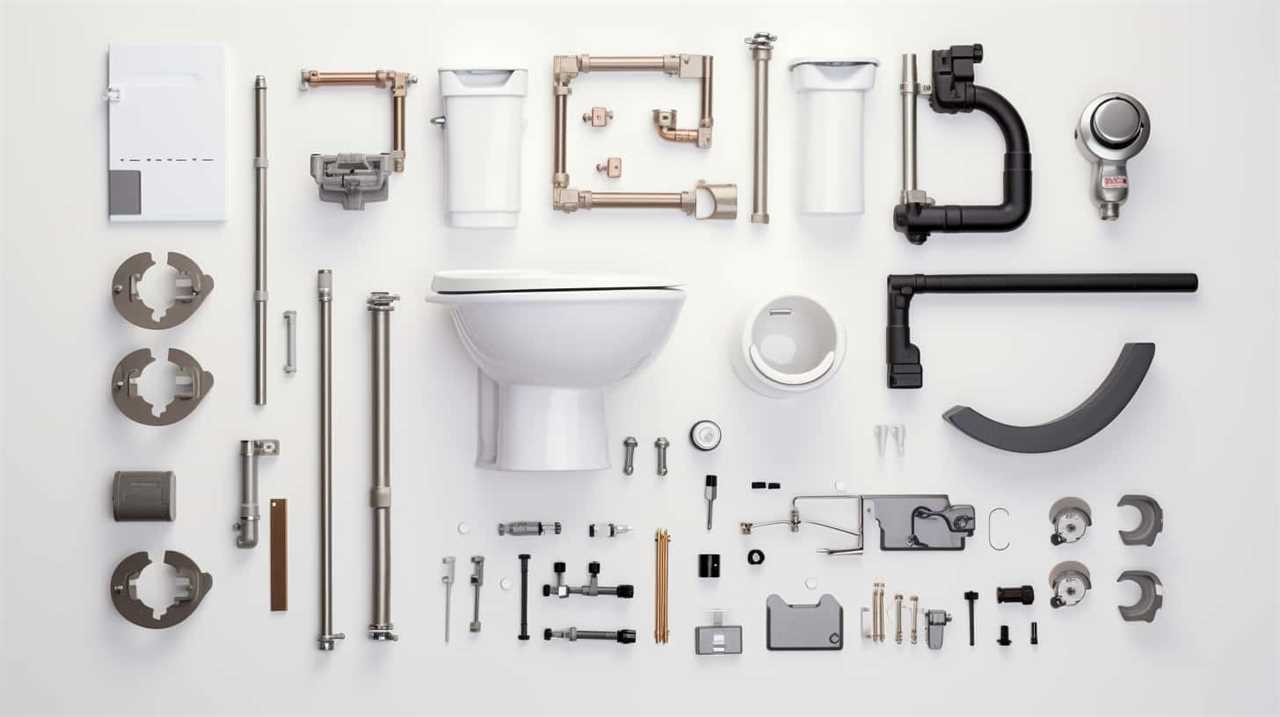
Be mindful of the alternative methods available and always use public restrooms responsibly. By respecting their customs, we can ensure a smooth and pleasant experience while visiting Italy.
So next time you’re in the beautiful country, remember to be considerate and flush the toilet paper in the designated manner.
With an impeccable eye for detail and a passion for bathroom-related, Ava leads our editorial team gracefully and precisely.
Under her guidance, Best Modern Toilet has flourished as the go-to resource for modern bathroom enthusiasts. In her free time, you might find Ava exploring antique shops and looking for vintage bathroom fixtures to add to her collection.
FAQ - Advanced Bathroom Queries
Can Wipes Go in the Toilet

Were you aware that flushing wipes down the toilet is the cause of over 90% of clogged pipes in the United States?
We, as a collective, need to understand the impact this seemingly harmless action has on our plumbing systems and the environment.
In this article, we will delve into the consequences of flushing wipes, explore alternative methods, and provide you with the proper disposal techniques.
Let’s educate ourselves and make informed decisions about the safety of flushing wipes.
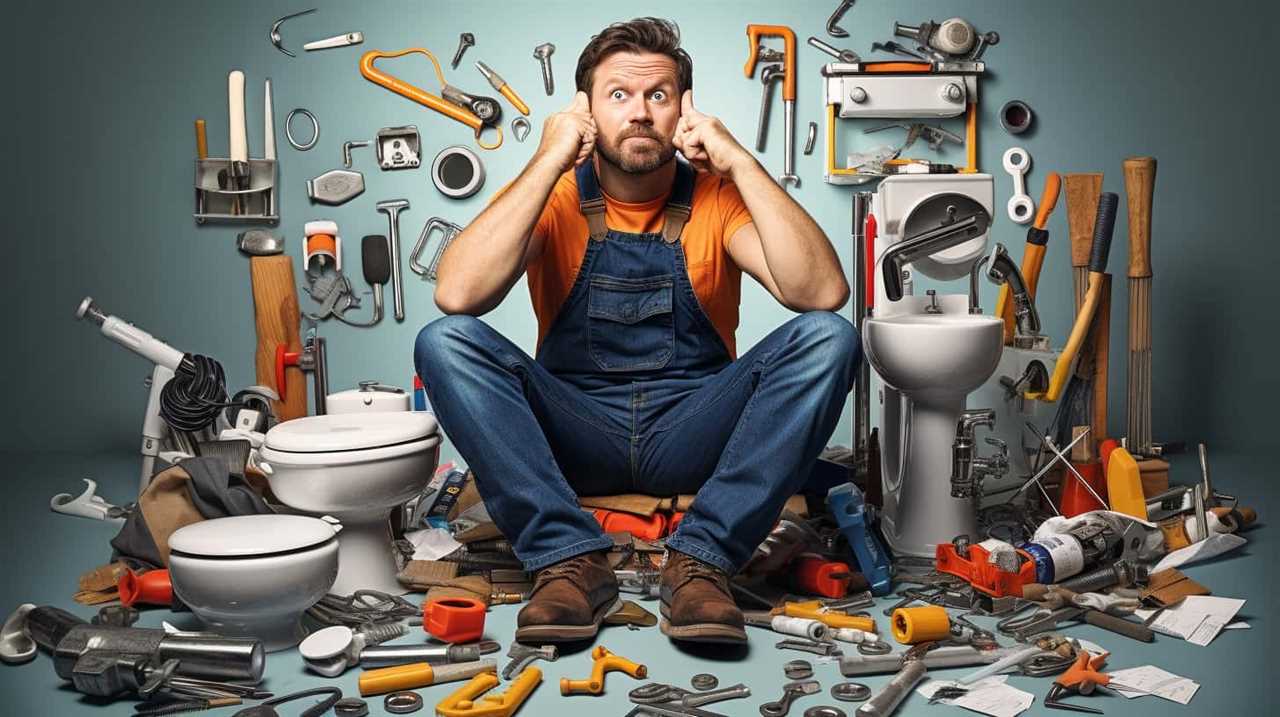
Key Takeaways
- Flushing wipes can cause clogged pipes, leading to expensive plumbing repairs.
- Flushing wipes contributes to marine pollution and harm to marine life and ecosystems.
- Biodegradable and reusable wipes are eco-friendly alternatives to flushing wipes.
- Proper disposal of wipes in the trash can help prevent blockages in the sewage system and protect the environment.
The Impact on Plumbing Systems
In our experience, flushing wipes down the toilet can have a detrimental impact on plumbing systems. When wipes are flushed, they can accumulate and create blockages in the pipes. This can lead to plumbing repairs that are time-consuming and costly.
The fibers in wipes don’t break down as easily as toilet paper, causing them to clump together and form clogs. These clogs can restrict the flow of water, leading to backups and potential flooding. Additionally, the presence of wipes in the pipes can create a breeding ground for bacteria, further exacerbating the problem.
It’s important to understand that the convenience of flushing wipes comes at the expense of potential plumbing issues. Transitioning to the subsequent section, the environmental consequences of flushing wipes will also be explored.
Environmental Consequences of Flushing Wipes
Continuing our exploration of the impact of flushing wipes on plumbing systems, we now turn our attention to the environmental consequences of this practice. Flushing wipes can have severe implications for our marine ecosystems and sewage treatment facilities.

Here are four key reasons why flushing wipes can be detrimental to the environment:
- Marine pollution: Wipes that are flushed down the toilet often end up in our oceans and waterways, contributing to marine pollution. These wipes can harm marine life, such as turtles and seabirds, when they mistake them for food or become entangled in them.
- Clogging sewage treatment facilities: Wipes don’t break down like toilet paper. Instead, they accumulate in sewage systems, leading to blockages and costly repairs for sewage treatment facilities. This can also result in untreated sewage overflow into our rivers and oceans.
- Increased energy and chemical usage: Dealing with wipes in sewage treatment plants requires additional energy and chemical usage, as these facilities need to work harder to break down and remove them. This increased resource consumption can have a negative impact on the environment.
- Microplastic pollution: Wipes often contain synthetic fibers that don’t biodegrade. When they enter water bodies, they break down into microplastics, which are harmful to aquatic life. These microplastics can be ingested by marine organisms, potentially entering the food chain and causing further harm.
It is crucial to avoid flushing wipes down the toilet to protect our marine ecosystems and sewage treatment facilities. Proper disposal in the trash can help mitigate these environmental consequences.
Alternatives to Flushing Wipes
Now, let’s delve into some alternatives to flushing wipes.
When it comes to biodegradable options, there are wipes available on the market that are made from materials that can break down naturally over time. These wipes are designed to be safe for the environment and can be disposed of in a compost bin or in the trash.
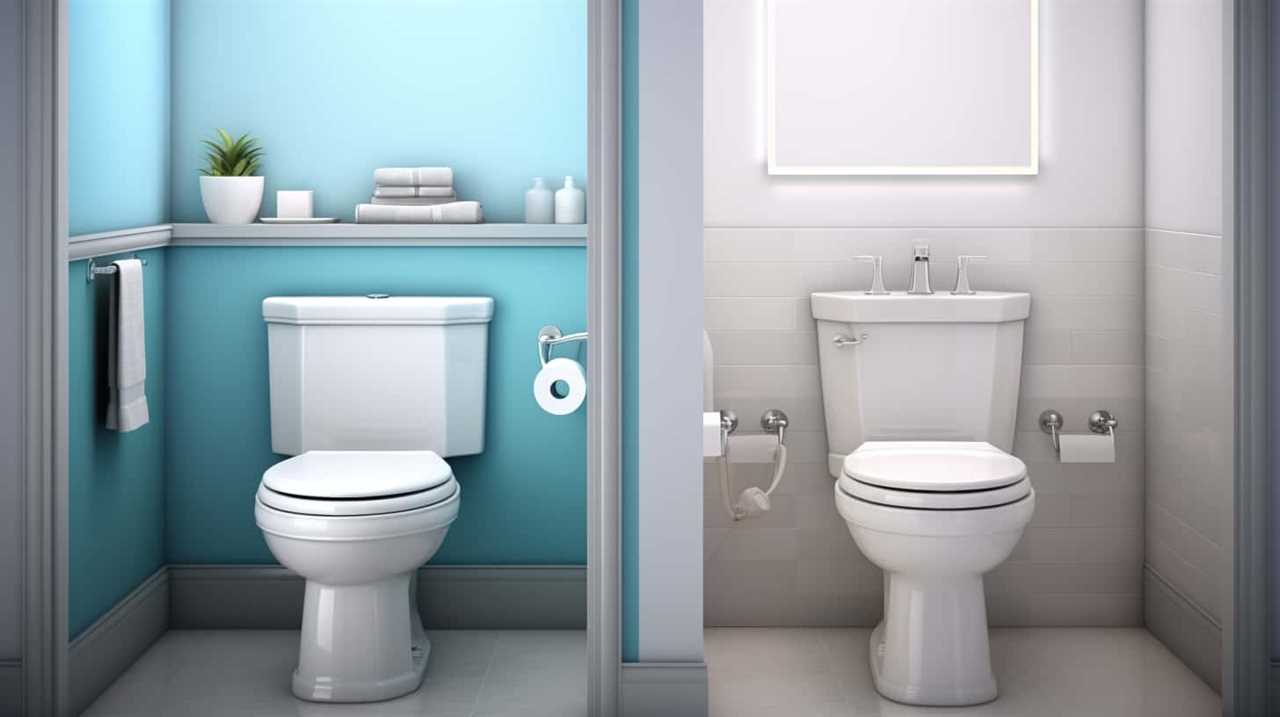
Another alternative is to create your own DIY reusable wipes. By using soft, washable materials such as cotton or bamboo fabric, you can make your own wipes that can be used multiple times before being washed. This not only reduces waste but also saves money in the long run.
Remember to wash these wipes thoroughly after each use to maintain hygiene.
Proper Disposal Methods for Wipes
To properly dispose of wipes, we should consider alternative methods that are safe for the environment and easy to implement. Here are four options to consider:
- Trash Bin: The simplest and most common method is to dispose of wipes in a trash bin. This ensures that they don’t end up in the sewage system and cause blockages.
- Composting: If you’re using biodegradable wipes, you can compost them along with other organic waste. Make sure to check the packaging for information on their biodegradability.
- Specialized Disposal Programs: Some municipalities offer specialized programs for disposing of wipes. These programs collect and dispose of wipes in an environmentally friendly manner.
- Flushable Wipes: If you choose to use flushable wipes, make sure they’re labeled as such and follow the manufacturer’s instructions. However, keep in mind that even flushable wipes can cause issues in the sewage system.
Considering the importance of hygiene practices during COVID-19, it’s crucial to dispose of wipes properly to protect the environment and prevent clogs in the sewage system.
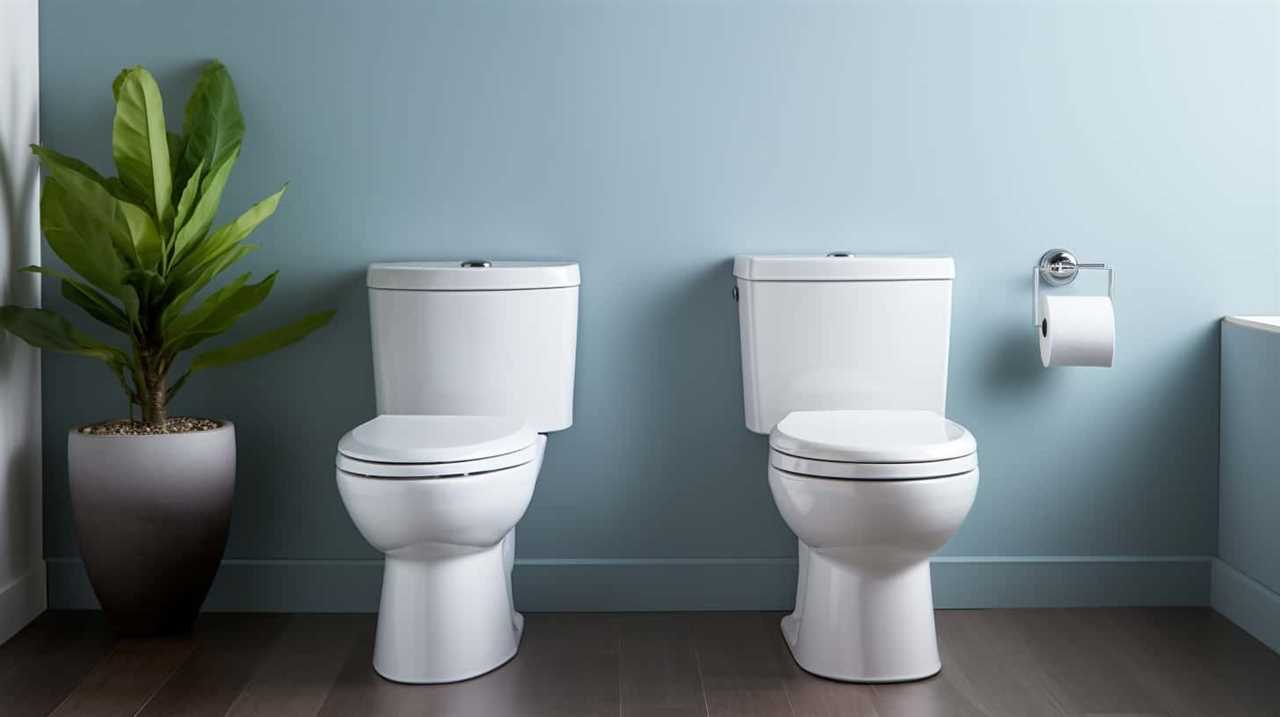
However, is it really safe to flush wipes? Let’s find out in the next section.
Conclusion: Is It Safe to Flush Wipes?
After considering the various disposal methods for wipes, it’s important to assess the safety of flushing them down the toilet. Although convenient, flushing wipes carries certain risks that shouldn’t be overlooked.
One of the main concerns is the potential damage to septic tanks. Unlike toilet paper, wipes don’t break down easily. Instead, they can accumulate in the septic tank and clog the system. This can lead to costly repairs and even complete system failure.
Additionally, wipes may also contribute to sewer backups and overflow in municipal sewer systems, causing environmental contamination and health hazards.
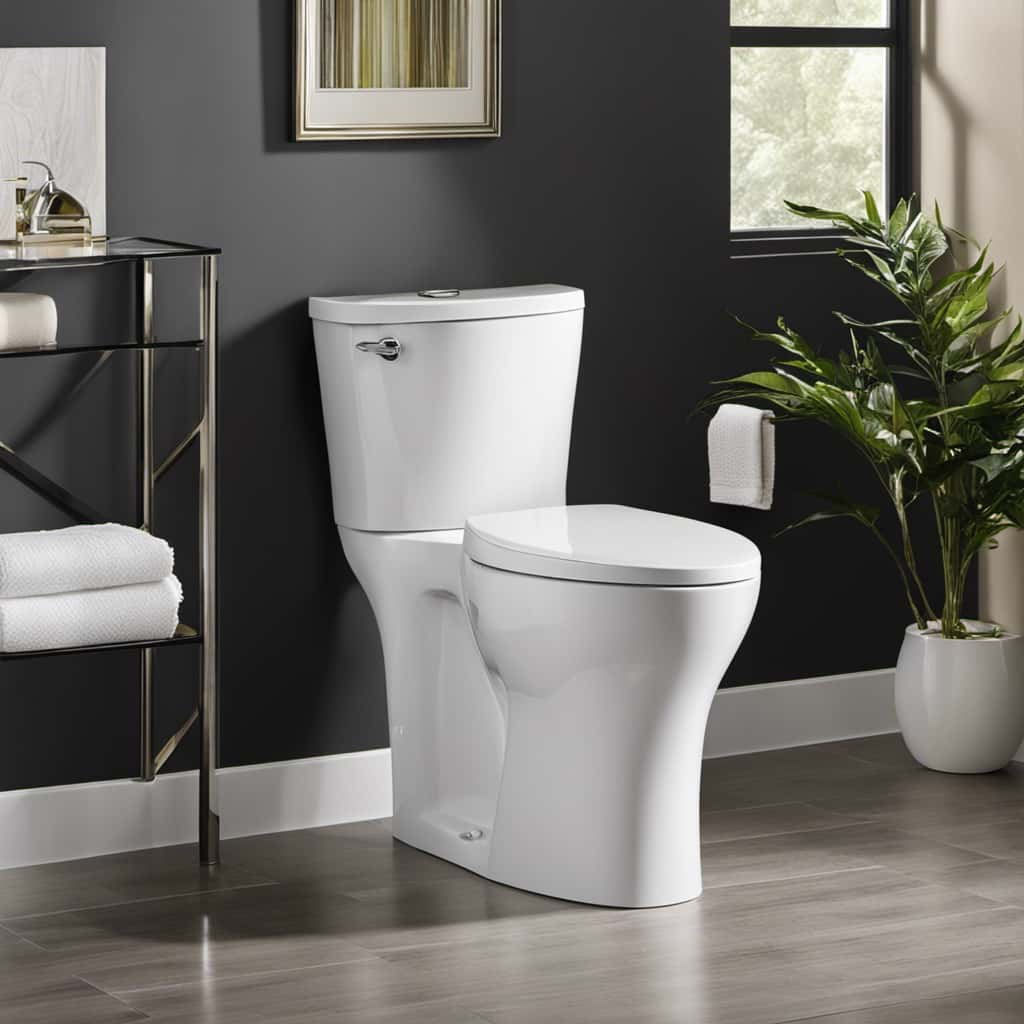
Therefore, it’s generally recommended to avoid flushing wipes and instead dispose of them in the trash to minimize the risks involved and prevent potential septic tank implications.
Frequently Asked Questions
How Do Wipes Affect the Quality of Water in Rivers and Oceans?
The impact of wipes on marine life is significant. Proper disposal methods are crucial to protect the quality of water in rivers and oceans. We must understand the consequences of not disposing of wipes correctly to ensure the health of our ecosystems.
Are All Types of Wipes Equally Harmful to the Environment When Flushed?
Different types of wipes have varying environmental impacts when flushed. Biodegradable wipes are more effective in reducing harm. Flushing wipes, regardless of type, can contribute to clogged pipes and sewage system issues.
Can Flushing Wipes Lead to Blockages in Household Plumbing Systems?
Flushing wipes can wreak havoc on our plumbing. We learned the hard way when our toilet backed up, causing a messy flood. Not only do wipes clog sewage systems, but they also pose potential health hazards.
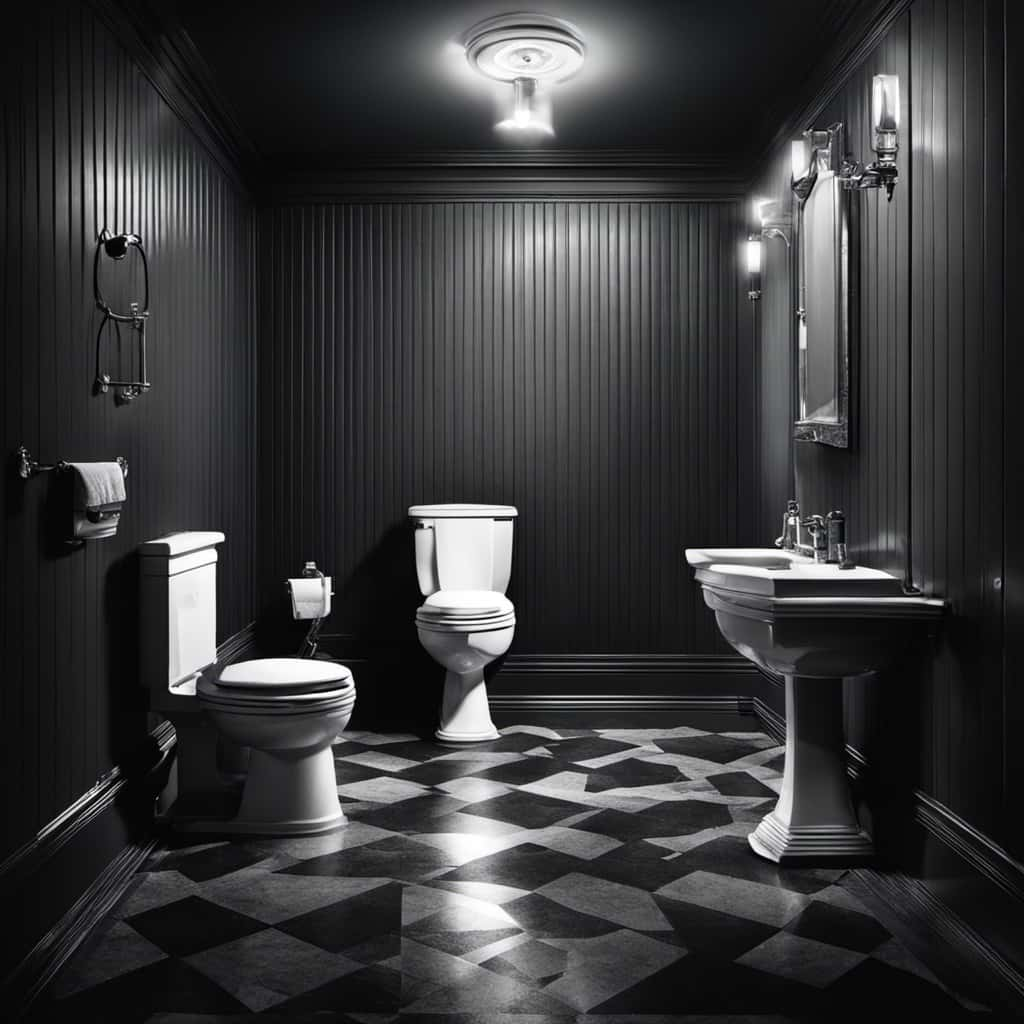
What Are Some Environmentally-Friendly Alternatives to Flushing Wipes?
Eco-friendly options and biodegradable alternatives are available as substitutes for flushing wipes. These alternatives are environmentally conscious and can help prevent blockages in household plumbing systems while still providing the desired functionality.
Are There Any Specific Guidelines for Disposing of Wipes in Landfills?
Guidelines for disposing of wipes in landfills are essential. We must follow proper procedures to avoid environmental harm. Disposing of wipes incorrectly can lead to clogged pipes, sewage backups, and negative impacts on our water systems.
Conclusion
In conclusion, it’s crucial to remember that wipes should never be flushed down the toilet. Despite their convenience, flushing wipes can lead to severe plumbing issues and have detrimental environmental consequences.
It’s essential to explore alternative disposal methods, such as throwing them in the trash or using biodegradable options.

Let’s be mindful of our actions and protect our plumbing systems and the environment for future generations.
With an impeccable eye for detail and a passion for bathroom-related, Ava leads our editorial team gracefully and precisely.
Under her guidance, Best Modern Toilet has flourished as the go-to resource for modern bathroom enthusiasts. In her free time, you might find Ava exploring antique shops and looking for vintage bathroom fixtures to add to her collection.
FAQ - Advanced Bathroom Queries
What Liquids Can Be Flushed Down the Toilet

Here’s what we’re aware of: not all liquids are safe to be flushed down the toilet. But don’t worry, we have the information on what can be safely flushed.
In this article, we’ll break it down for you, using our technical know-how and expertise. From water and urine to toilet paper and liquid waste from cleaning and personal care products, we’ll guide you through the dos and don’ts of flushing liquids.
Get ready to master the art of proper toilet liquid disposal!
Key Takeaways
- Water, urine, and toilet paper are the only liquids that can be safely flushed down the toilet.
- Flushing harmful liquids down the toilet can lead to water pollution, contamination of water sources, harm to aquatic life, and sewer system blockages.
- Liquids such as cooking oil and grease, medications and drugs, paint and solvents, and cleaning chemicals should never be flushed down the toilet.
- Proper disposal methods for liquids include utilizing recycling centers, contacting waste management authorities for guidance, participating in community collection events, and using sealed containers or absorbent materials before disposal.
Water
We can flush large quantities of water down the toilet without causing any harm to the plumbing system. Toilet water, which is essentially clean water, poses no threat to the pipes or the overall hygiene of the toilet. This is because the plumbing system is designed to handle the volume and flow of water during the flushing process.
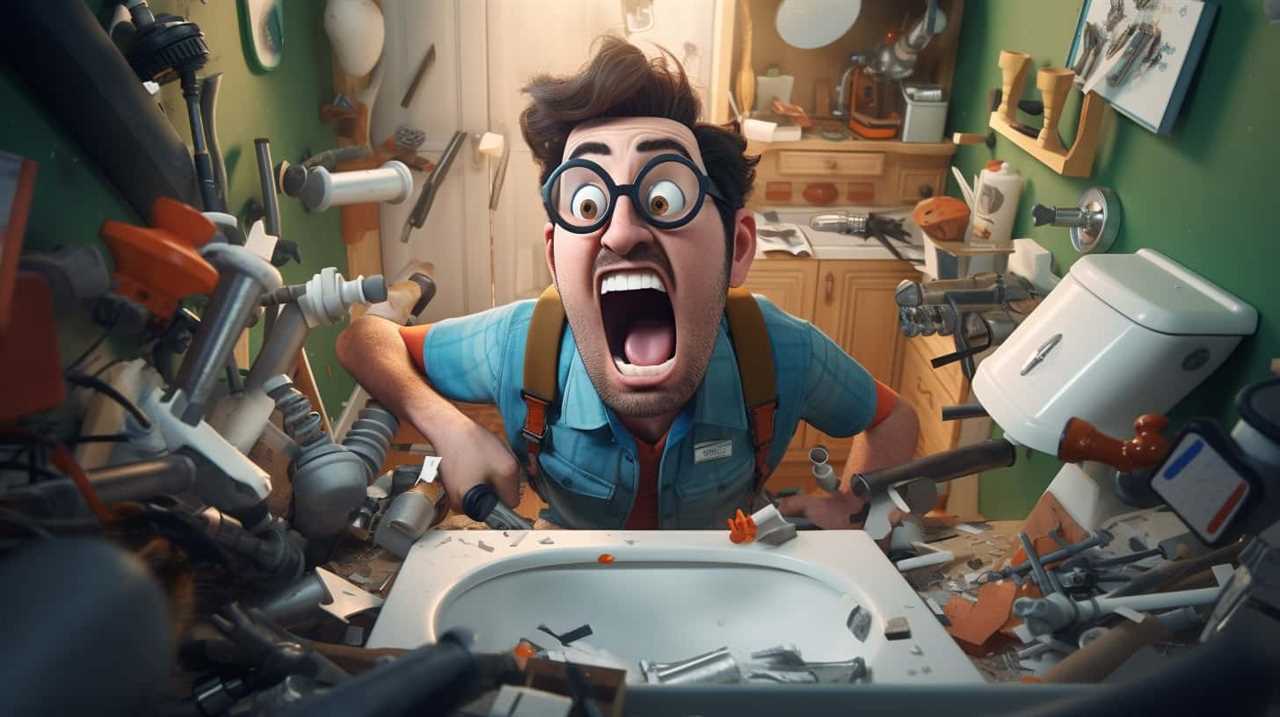
Water is an essential element in maintaining toilet hygiene, as it helps in effectively rinsing away waste and preventing any unpleasant odors. Additionally, the force of the water during flushing aids in keeping the toilet bowl clean and free from any residue.
Therefore, when it comes to toilet hygiene, water is a safe and necessary liquid that can be flushed down the toilet without any concerns.
Urine
To maintain proper toilet hygiene, we can safely flush urine down the toilet. Urine is a waste product produced by the kidneys, consisting mainly of water and dissolved metabolic waste. It’s generally sterile and poses no significant risk to the environment or public health when flushed down the toilet. In fact, flushing urine helps to prevent odors and maintain a clean and hygienic toilet environment.
However, it’s important to note that if someone has a urinary tract infection (UTI), it’s advisable to seek medical attention and follow the prescribed treatment. UTIs can be caused by bacteria and flushing urine infected with bacteria may contribute to the spread of infection.
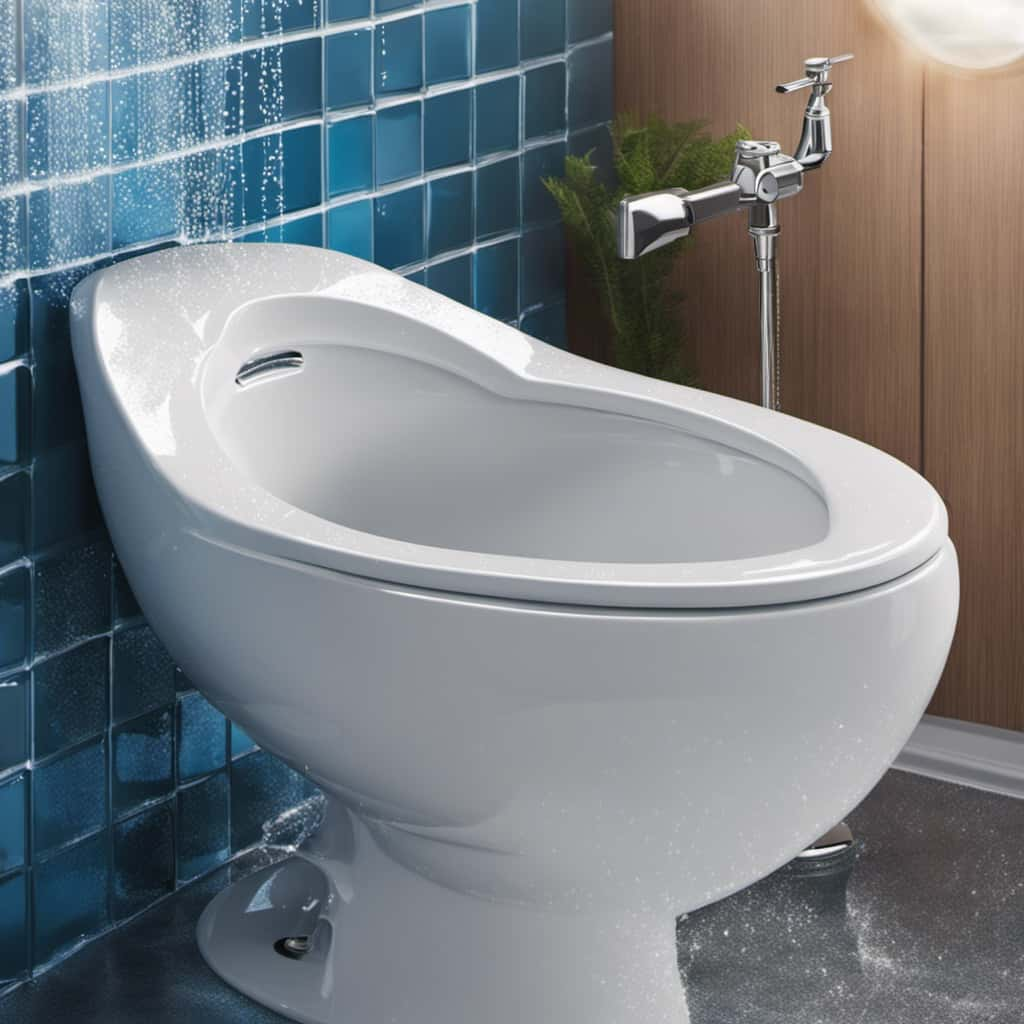
Now, let’s move on to the next essential topic of discussion: toilet paper.
Toilet Paper
Moving on from the previous subtopic of urine, let’s now discuss toilet paper and its role in maintaining proper toilet hygiene. Toilet paper is an essential item in every bathroom, and choosing the right brand is crucial. Here are four important factors to consider when selecting toilet paper:
- Softness: Look for brands that offer a soft and gentle texture to avoid any discomfort during use.
- Strength: Opt for toilet paper that’s strong and durable to prevent tearing or breakage.
- Absorbency: Consider brands that offer excellent absorbency for efficient cleaning and reduced usage.
- Eco-Friendliness: Explore toilet paper alternatives made from recycled materials or bamboo, which are more sustainable options.
Liquid Waste From Cleaning Products
After considering the factors for selecting the right toilet paper, let’s now turn our attention to the proper disposal of liquid waste from cleaning products. When it comes to liquid waste from cleaning products, it is important to be mindful of the impact on the environment. Many conventional cleaning products contain harmful chemicals that can pollute water systems and harm aquatic life. To minimize the negative effects, it is essential to explore eco-friendly alternatives and adopt proper disposal methods. Here is a table highlighting some eco-friendly alternatives and proper disposal methods for liquid waste from cleaning products:
| Eco-friendly Alternatives | Proper Disposal Methods |
|---|---|
| Use natural cleaning products made from plant-based ingredients | Dispose of liquid waste at designated collection points |
| Make your own cleaning solutions using vinegar, baking soda, and lemon juice | Avoid pouring cleaning product waste down the drain |
| Look for cleaning products with eco-label certifications | Follow local regulations for hazardous waste disposal |
| Use microfiber cloths and reusable mop pads instead of disposable wipes | Recycle empty cleaning product containers |
Liquid Waste From Personal Care Products
When it comes to liquid waste from personal care products, we must consider the proper disposal methods to minimize environmental impact. Here are four important points to keep in mind:
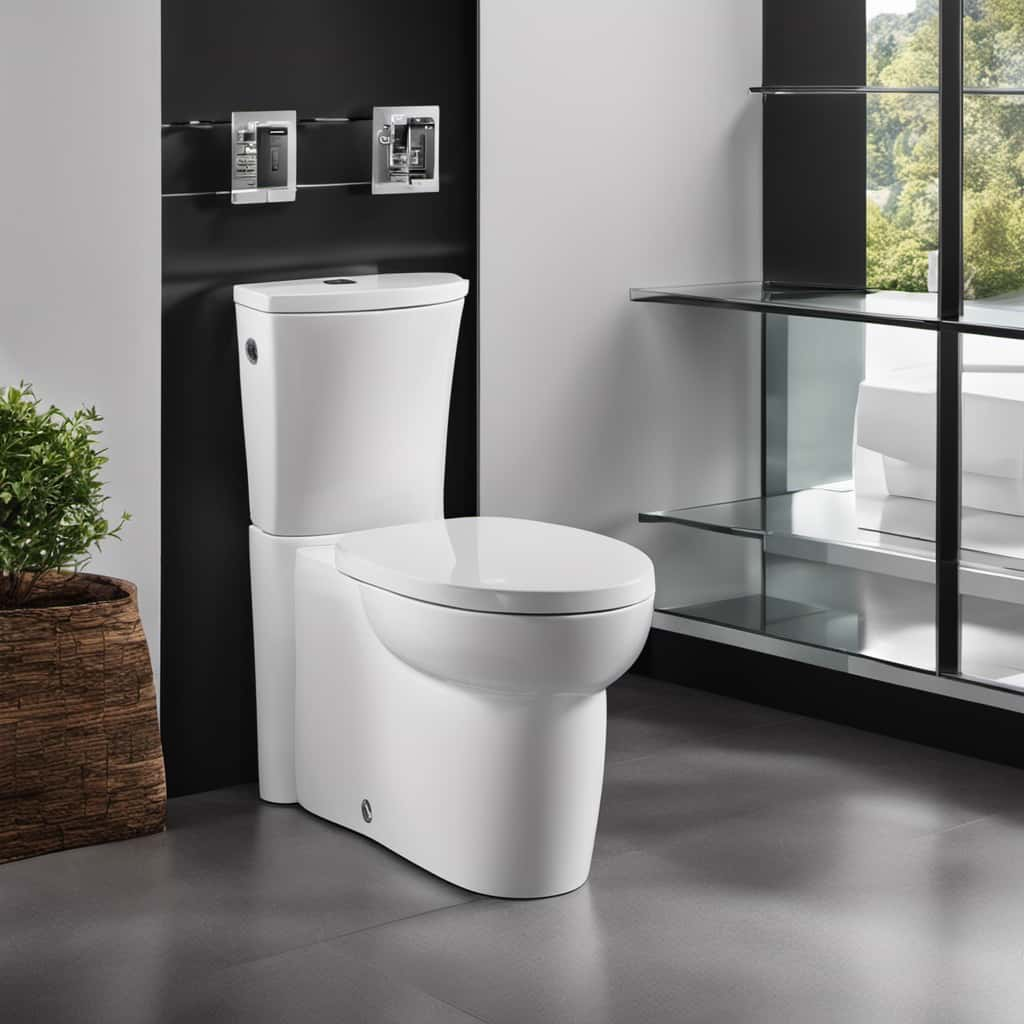
- Hazardous chemicals: Many personal care products contain hazardous chemicals such as parabens, phthalates, and triclosan. These substances can be harmful to aquatic life and may disrupt ecosystems if they enter water bodies.
- Environmental impact: Improper disposal of personal care product waste can result in contamination of water sources, affecting both human health and wildlife. It’s crucial to dispose of these liquids responsibly to minimize their impact on the environment.
- Proper disposal methods: Check local regulations for guidance on disposing of personal care product waste. In many cases, it’s best to minimize waste by using products sparingly and opting for environmentally friendly alternatives. When disposing of liquid waste, consider recycling options or take it to a designated hazardous waste collection facility.
- Consumer responsibility: As consumers, we’ve a role to play in minimizing the environmental impact of personal care products. Choosing products with eco-friendly formulations and packaging, as well as properly disposing of any liquid waste, can help protect the environment for future generations.
Frequently Asked Questions
Can I Flush Coffee Down the Toilet?
We can’t flush coffee down the toilet. It’s best to dispose of coffee grounds in alternative methods, like composting or throwing them in the trash. Flushing coffee can clog pipes and cause damage.
Is It Safe to Flush Expired Medication Down the Toilet?
Flushing expired medication down the toilet is not safe. It can have detrimental environmental impacts. Remember, "An ounce of prevention is worth a pound of cure." Properly dispose of medication through take-back programs or at designated collection sites.
Can I Dispose of Bleach by Flushing It Down the Toilet?
Flushing bleach down the toilet is not a safe way to dispose of it. The environmental impact of flushing bleach includes potential contamination of water sources and harm to aquatic life.
Is It Okay to Flush Cooking Oil or Grease Down the Toilet?
Flushing cooking oil or grease down the toilet is a big no-no. It can clog the pipes and cause serious plumbing issues. Proper grease disposal involves cooling, solidifying, and disposing of it in the trash.

Can I Flush Pet Waste, Such as Cat Litter, Down the Toilet?
When considering toilet safety precautions, it’s important to note that flushing cat litter down the toilet is not recommended. Cat litter can cause clogs and damage to plumbing systems. Dispose of it properly in the trash instead.
Conclusion
In conclusion, it’s important to only flush water, urine, toilet paper, and liquid waste from cleaning and personal care products down the toilet. Flushing other liquids can cause clogs and damage to the plumbing system.
Did you know that approximately 75% of plumbing issues are caused by improper flushing? Imagine the frustration of dealing with a clogged toilet and the costly repairs that can follow.
Let’s be mindful of what we flush to avoid unnecessary plumbing problems.
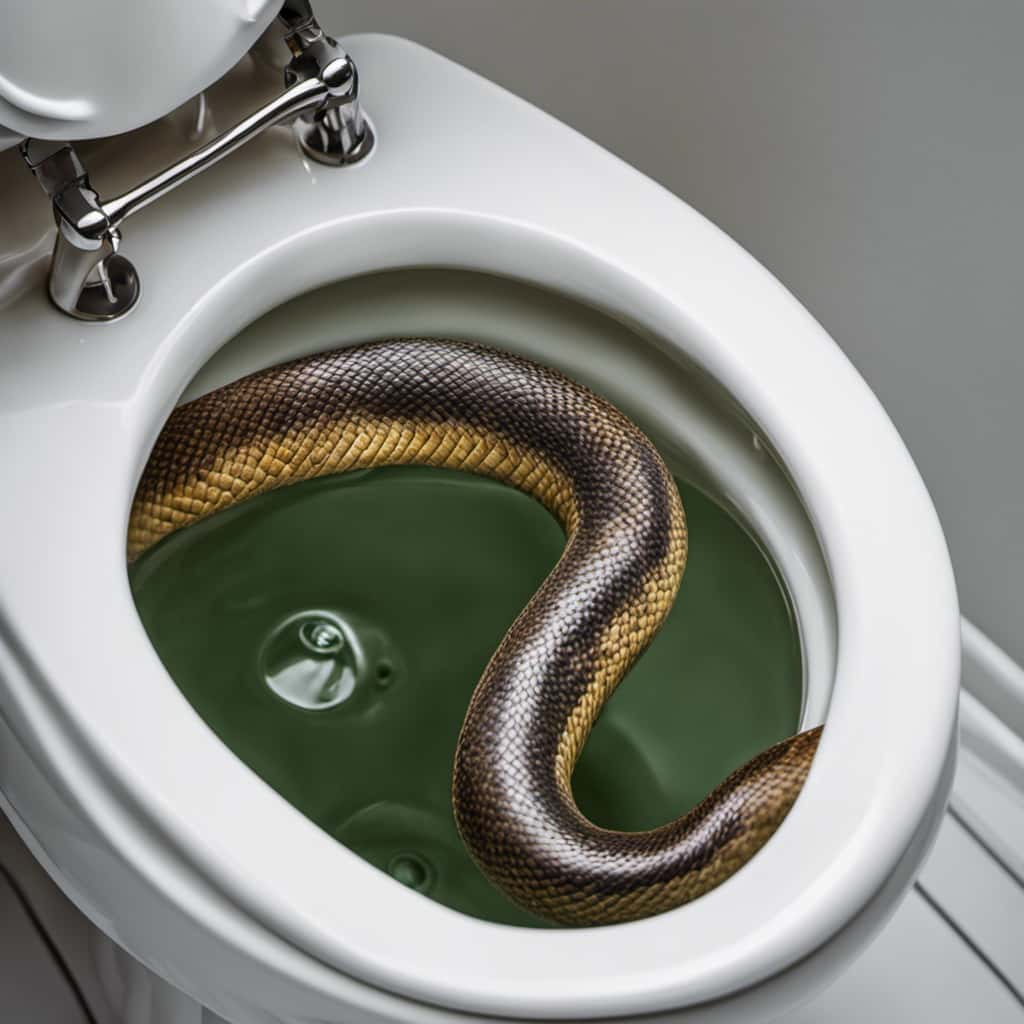
With an impeccable eye for detail and a passion for bathroom-related, Ava leads our editorial team gracefully and precisely.
Under her guidance, Best Modern Toilet has flourished as the go-to resource for modern bathroom enthusiasts. In her free time, you might find Ava exploring antique shops and looking for vintage bathroom fixtures to add to her collection.
-

 Guides3 months ago
Guides3 months agoHow Smart Toilets Can Help Detect Early Signs of Health Issues
-

 Guides3 months ago
Guides3 months agoThe Future of Public Restrooms: Smart Toilets in Airports, Malls, and Stadiums
-

 Guides3 months ago
Guides3 months agoSmart Toilets in Japan: What We Can Learn From the Leaders in Toilet Tech
-

 Guides2 months ago
Guides2 months agoThe Future of Bathroom Cleaning: How Smart Toilets Are Making Chores Obsolete
-

 Guides2 months ago
Guides2 months agoThe Rise of Smart Toilet Apps: Tracking Health and Habits on Your Smartphone
-

 Guides3 months ago
Guides3 months agoSmart Toilet Regulations and Standards: Navigating the Legal Landscape
-

 Guides2 months ago
Guides2 months agoSmart Toilets in Healthcare: Improving Patient Care and Monitoring
-

 Guides3 months ago
Guides3 months agoThe Impact of Smart Toilets on Real Estate Value and Home Sales


